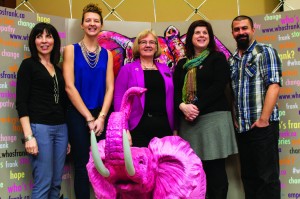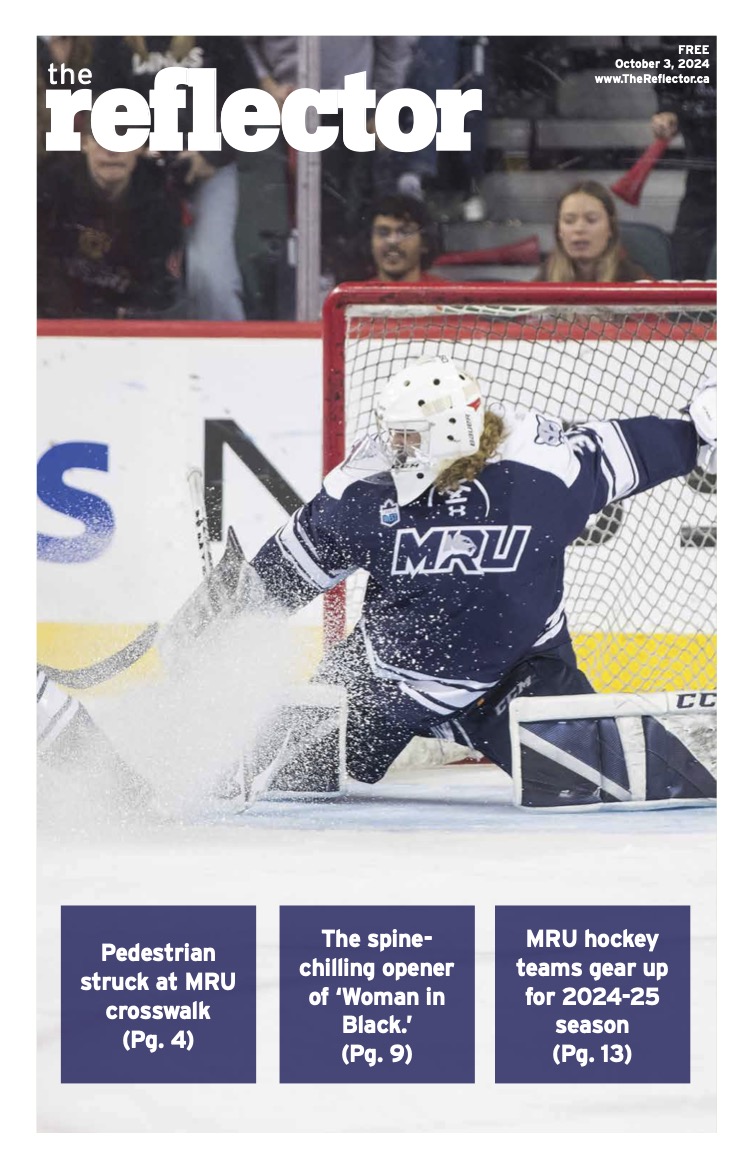“Frank” Conversations About Sexual Violence
Who’s Frank? Campaign 2016 promotes open conversations about preventing and recovering from sexual violence
Amy Tucker, Staff Writer
Lets be frank, talking about sexual violence isn’t the breeziest topic, especially at the university age (18 to 25) — the most vulnerable demographic.
That’s why Who’s Frank?, an anti-bullying campaign which seeks to open up the conversation of sexual violence amongst young adults, hosted a panel discussion to educate an audience of students and faculty on how and why to open up the dialogue.
“The idea of everyone being Frank and having open, honest discussions about things is the starting point of understanding critical issues,” said Natalie Badenduck, a founding member of Mount Royal’s University’s “Who’s Frank” campaign.
SAMRU Vice-President Student Life Zoe Slusar says that initiating these critical issues in a light manner as opposed to hitting students with “brutal” subject matter, will make it more comfortable for students to kick-start a conversation that will lead to the serious heart of the issue.
“We wanted to present it to students as something that we can be talking about and that it’s okay to have questions about, and it’s great to have dialogue about,” said Slusar.
The MRU Students Association works to promote student’s sexual health and has so far championed various programs such as “How to be a Better Lover,” a workshop designated to educate students on how to have healthy relationships, and “Man Enough” which is an eight-week interactive program for men to learn about perceptions of masculinity.
Cathy Carter-Snell, MRU School of Nursing and Midwifery Professor, says that everyone has a role in prevention, and that one goal of the campaign is to help people recognize vulnerable situations.
There are “serial” sex offenders, explains Carter-Snell, who hang out in bars and other social areas and will prey on the people that seems the least likely to defend themselves.

Frank, the pink elephant mascot and the panel speakers from left to right: Gaye Warthe, Zoe Slusar, Cathy Carter-Snell, Scharie Tavcer, and Joe McGuire. Frank is symbolic of issues that are not being talked about enough | Photo by Amy Tucker
Carter-Snell says that prevention includes planning ahead such as is to line up a designated driver when going out and then ensuring you go home with that driver instead of with someone you met at the bar.
“If the person is attractive then, they will still be attractive the next day.”
Joe McGuire, Sexual Assault Educator in the men’s program with Calgary Communities Against Sexual Abuse (CASA), says men experience sexual violence too and opening the dialogue up to them is crucial.
McGuire says that the stereotypes in society ruling men as “always willing” to have sex causes barriers for men to come forward or even recognize that sexual assault has occurred.
“Even if there are men out there who have recognized that something has happened to them was assault, there’s often a problem of not really understanding where they can go,” said McGuire.
Scharie Tavcer, Criminal Justice Associate Professor, discusses systemic biases which prevent victims from coming forward for legal action.
“One tenth of victims report to police, a fraction of that goes to court, a fraction of that ends up in a conviction, a fraction of that ends up in incarceration,” said Tavcer.
Gaye Warthe, Chair and Associate Professor in the Department of Child Studies and Social Work, says “bystander intervention” is needed to help victims come forward to speak about their experiences.
Warthe notes that it is the best way to invite students to lead the conversation without feeling as though they need to dive head first into involvement. Bystander intervention can be as simple as actions congruent to the “I believe you”campaign which involves listening and acknowledging a victim.
To learn more about the ‘I Believe You’ campaign visit www.ibelieveyou.info. If you or someone you know is a victim of sexual assault or relationship abuse, there are resources available through mtroyal.ca/steppingup.





